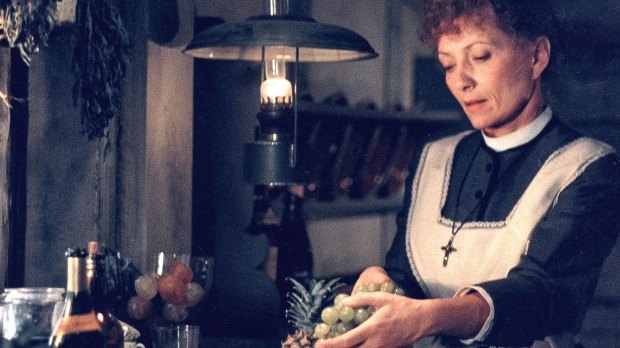Before the promulgation of the Novus Ordo in 1969, most folks had to leaf through a missal in order to understand what was being said during Mass. Those days may be long over, but that doesn’t mean the Church believes the faithful have lost the skill to simultaneously read and pay attention to what’s going on in front of them. In fact, when it comes to cinema, the Vatican’s list of great movies compiled in 1995 suggests that’s exactly what we should do. Here’s a small sampling of subtitled non-English motion pictures which the Vatican purports are well worth reading along with.
Andrei Rublev (1966)
On the surface, one might wonder why the Vatican, or anyone else for that matter, would suggest enduring a three-and-a-half-hour-long black and white movie in which not much happens and the title character either refuses to talk or occasionally disappears altogether. Simply put, it’s because Andre Rublev is one of the greatest movies ever made about faith. It may, in fact, be one of the greatest movies ever made, period.
Ostensibly a biography detailing the life of the famous 15th-century monk and religious icon painter, what the film is really about is the perseverance of faith in the face of life’s seemingly unending stream of brutalities. Set during the latter decades of Russia’s trouble with the Tatars, the film follows Rublev as he leaves the monastery to go spread God’s message through his paintings. Unfortunately, the battles and bloodshed the artist encounters beats his belief down until, in a rash moment, Rublev himself commits an act of violence that casts doubt on his calling.
Or so the monk believes. God knows better, however, and in an amazing final act, Rublev witnesses an act of creation that reaffirms his faith and drives him to renew his artistic pursuits. The film ends in an explosion of color as the camera moves across the surfaces of some of Rublev’s most beloved icons, deftly illustrating that even in a war-torn world, the transcendence of God shines through.
The Seventh Seal (1957)
Perhaps the most parodied film in cinema history (most excellently in Bill & Ted’s Bogus Journey), The Seventh Seal concerns a knight returning from a decade-long stint in the Crusades, only to find the literal figure of Death waiting for him on the shore. In order to buy some extra time, the knight challenges Death to a game of chess. As the match proceeds, Death allows the knight to wander the countryside, supposedly to allow the man the opportunity to perform one last worthy deed before dying.
Rather, what the reprieve really does is give the knight time to debate the existence of God. Already wracked with doubt due to his wartime experiences, the knight is further saddened by his run-ins with assorted criminals, adulterers, and suspect religious zealots, all of whom seem to confirm his worst fear that God is nowhere to be found in the world. And if God is absent, then how much more terrifying is the idea of Death and eternal nothingness?
That the Vatican would choose to include on its list of great films a movie that so clearly sympathizes with the atheist view of the world would seem odd except for two things. One is the recognition that human suffering will always be the biggest obstacle to belief. The other is that even though the makers of The Seventh Seal clearly identify with the knight, they can’t find it in themselves to give him the final word. That honor goes to a small family of actors the knight met on his journeys, one which is headed by a man who has visions of the Virgin Mary and her child. As the chess match concludes and Death leads the knight away to his dark fate, the camera settles on this smiling family, their hope in God a shield to the horrors of the world. Alexander Pope was right, “Hope springs eternal in the human breast; Man never Is, but always To be blest. The soul, uneasy, and confin’d from home, Rests and expatiates in a life to come.”
Babette’s Feast (1987)
This is the movie so loved by Pope Francis that he even referenced it in the apostolic exhortation Amoris laetitia. The narrative is as simple as it gets. Two sisters care for the aging residents of a strict Protestant colony in 1871 Denmark. After an expatriated French woman named Babette is sent to them for shelter, the sisters agree to take her on as a housekeeper. Many years later, after Babette comes into some money, she spends it all on a lavish meal for the sisters and their flock, much to the chagrin of their ascetic natures.
Such a synopsis doesn’t really do the movie justice. It’s a film that quietly relates a story of learning to gratefully accept the good things God has given us while also gracefully imparting a lesson on how charity begets charity. And let’s be honest, it also makes your mouth water. Even if you don’t like quail, you’re guaranteed to want some after watching Babette’s Feast.
These three movies, and many more from the Vatican’s list of great films, are currently streaming on The Criterion Channel, which graciously offers a 14-day free trial. Or you can buy them. Either way, why not put on your glasses and enjoy reading along with some excellent movies. Your spirit will be glad you did.

